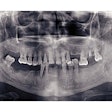Children and adolescents with higher concentrations of urinary bisphenol A (BPA) face had significantly increased odds of being obese, according to a new study in the Journal of the American Medical Association (September 19, 2012, Vol. 308:11, pp. 1113-1121).
The report is likely the first to link environmental chemical exposure with childhood obesity in a nationally representative sample, according to the study authors, from the New York University (NYU) School of Medicine.
To examine the association between urinary BPA concentrations and body mass in children, the researchers conducted a cross-sectional analysis of a nationally representative subsample of 2,838 participants, ages 6 through 19 years, randomly selected for measurement of urinary BPA concentration in the 2003-2008 National Health and Nutrition Examination Surveys.
Body mass index (BMI), converted to sex- and age-standardized z scores, was used to classify participants as overweight (BMI of 85th percentile or greater for age/sex) or obese (BMI of 95th percentile or greater). The median (midpoint) urinary BPA concentration for participants in the study was 2.8 ng/mL. The prevalence of obesity was 17.8% (n = 590) and overweight 34.1% (n = 1,047).
The BPA concentrations of the participants were divided into four groups. Controlling for race/ethnicity, age, caregiver education, poverty to income ratio, sex, serum cotinine level, caloric intake, television watching, and urinary creatinine level, children in the lowest urinary BPA quartile had a lower estimated prevalence of obesity (10.3%) than those in quartiles 2 (20.1%), 3 (19.0%), and 4 (22.3%).
Compared with the first quartile, participants in the third quartile had approximately twice the odds for obesity. Participants in the fourth quartile had a 2.6 higher odds of obesity.
Further analyses showed this association to be statistically significant in only one racial subpopulation, white children and adolescents. The researchers also found that obesity was not associated with exposure to other environmental phenols commonly used in other consumer products, such as sunscreens and soaps.
Nearly 93% of Americans 6 years old or older have detectable levels of BPA in their urine, according to the 2003-2004 National Health and Nutrition Examination Survey, the researchers noted.



















